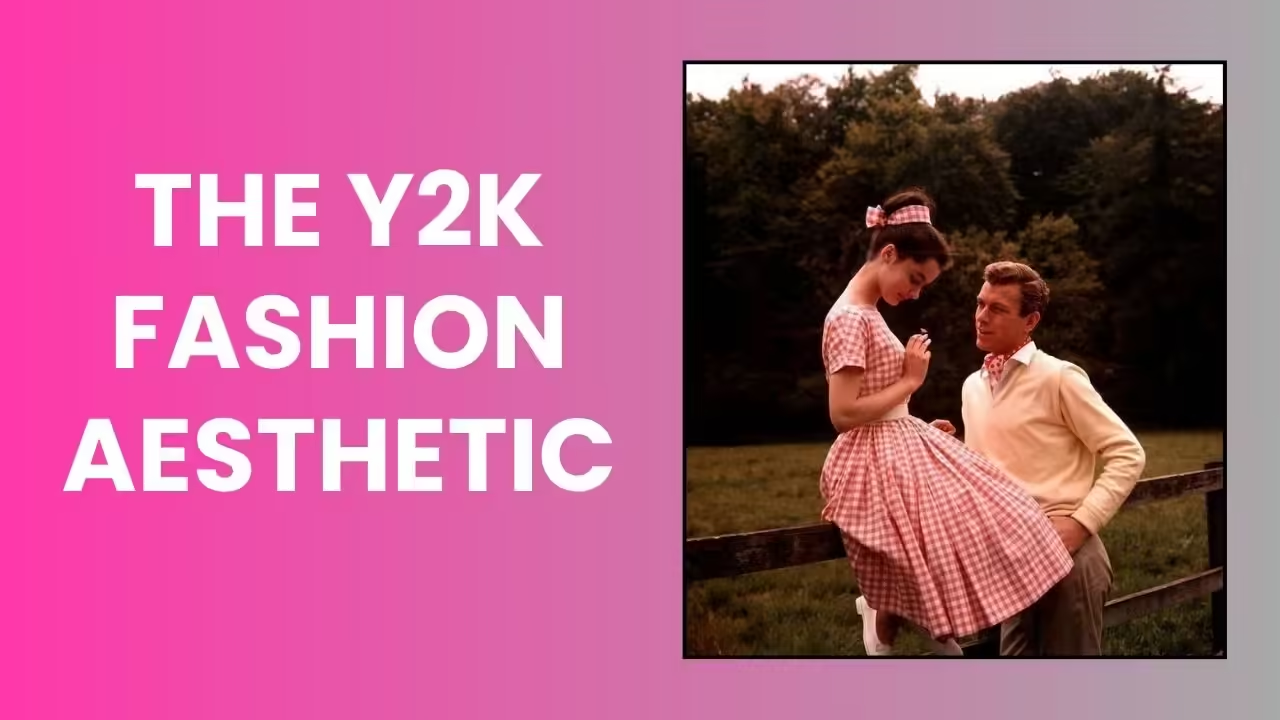Trends often come and go, but some manage to circle back with a fresh perspective. The Y2K fashion aesthetic, which draws inspiration from the late 1990s and early 2000s, is one such trend that has recently made a significant resurgence. Characterized by its bold, playful, and often futuristic elements, Y2K fashion is more than just a passing trend; it’s a cultural phenomenon that reflects a unique period of technological optimism and pop culture exuberance.
The Origins of Y2K Fashion
The Y2K (Year 2000) aesthetic emerged during a time when the world was on the brink of a new millennium. The late 1990s and early 2000s were marked by rapid technological advancements, the rise of the internet, and a fascination with the future. This period also saw the convergence of various cultural influences, from the emergence of digital media to the globalization of pop culture. As a result, the fashion of the time was a reflection of this unique blend of optimism, experimentation, and a hint of kitsch.
Key Elements of Y2K Fashion
Y2K fashion is defined by its eclectic mix of styles, blending futuristic elements with nostalgic references. Here are some of the key features that make this aesthetic so distinctive:
1. Bold Colors and Prints:
- Bright, often neon colors like pink, purple, and blue were staples of the Y2K palette. These vibrant hues were often paired with playful patterns, such as butterfly motifs, smiley faces, and abstract designs, creating a look that was both eye-catching and youthful.
2. Futuristic Influences:
- The turn of the millennium brought with it a fascination with the future, which was reflected in the fashion of the time. Shiny, metallic fabrics, often in silver or holographic finishes, became popular, evoking a sense of space-age chic. Small, futuristic sunglasses, inspired by sci-fi movies like The Matrix, were also a defining accessory of the era.
3. Techwear and Accessories:
- Accessories played a crucial role in the Y2K aesthetic, with an emphasis on tech-inspired designs. Tiny, wireframe sunglasses, chunky platform shoes, and mini bags were all the rage. Velour tracksuits, popularized by brands like Juicy Couture, became an iconic symbol of the era, often seen on celebrities like Paris Hilton and Britney Spears.
4. Denim Everything:
- Denim was a key fabric of the Y2K era, with low-rise jeans, denim skirts, and jackets dominating the fashion scene. Double denim, or the pairing of denim on denim, was a bold fashion statement that many embraced. These pieces were often adorned with embellishments like rhinestones, embroidery, or even patchwork.
5. Logomania:
- The early 2000s saw the rise of logomania, where brand logos were prominently displayed on clothing and accessories. High-end fashion houses like Louis Vuitton, Fendi, and Dior capitalized on this trend, creating monogram prints that became status symbols. This trend was not just about fashion; it was about making a statement.
6. Playful and Kitschy:
- Y2K fashion was not afraid to embrace a sense of playfulness and kitsch. Baby tees with graphic prints or quirky slogans were popular, often paired with low-rise jeans or mini skirts. Hair accessories like butterfly clips, colorful barrettes, and chunky highlights added a fun, carefree vibe to the look. Glitter makeup, frosted lip gloss, and body glitter were also essential components of the Y2K beauty aesthetic.
7. Pop Culture References:
- Pop culture had a significant influence on Y2K fashion. Movies like Clueless, Legally Blonde, and The Matrix inspired trends ranging from preppy plaid skirts to sleek, all-black ensembles. Music icons like Britney Spears, Destiny’s Child, and NSYNC also played a crucial role in shaping the fashion of the time, with their music videos and red carpet appearances serving as style guides for a generation.
The Modern Resurgence of Y2K Fashion
In recent years, the Y2K aesthetic has made a remarkable comeback, particularly among Gen Z, who have embraced the style with a sense of nostalgia for an era they may not have even experienced firsthand. Social media platforms like TikTok and Instagram have played a significant role in popularizing the aesthetic, with influencers and fashion enthusiasts showcasing their Y2K-inspired outfits, makeup looks, and accessories.
The modern resurgence of Y2K fashion is not just a direct replication of early 2000s styles but a reinterpretation that blends past and present influences. While the bold colors, playful prints, and futuristic elements remain, there’s a contemporary twist that makes the look feel fresh and relevant for today.
High-end fashion brands and fast-fashion retailers alike have also tapped into the Y2K revival, offering collections that feature iconic elements of the era. From reissued monogram bags to updated versions of the velour tracksuit, the influence of Y2K fashion is evident across the fashion industry.
Why Y2K Fashion Matters
The resurgence of Y2K fashion is more than just a trend; it’s a reflection of the cyclical nature of fashion and the cultural significance of nostalgia. In a time of uncertainty and rapid change, there’s a comfort in looking back to a period that was defined by optimism, creativity, and a sense of possibility.
For many, Y2K fashion represents a time of innocence and experimentation, a time when fashion was fun, bold, and unapologetically individualistic. By embracing this aesthetic, today’s fashion enthusiasts are not only paying homage to the past but also redefining what it means to be stylish in the present.
In the end, the Y2K fashion aesthetic is a celebration of the past, reimagined for the future. It’s a reminder that fashion is not just about what we wear, but how it makes us feel, and the stories it allows us to tell.



